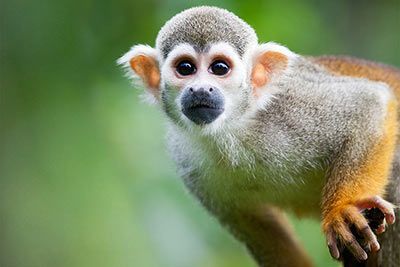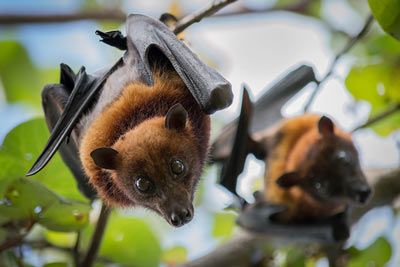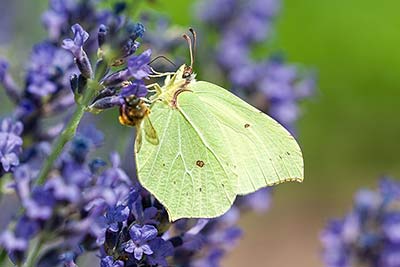Asian Elephant
Asian Elephant Facts
| Size | Up to 10 feet (3 meters) |
| Speed | Up to 27 mph (43 km/h) |
| Weight | Up to 5.5 tons |
| Lifespan | 50-60 years |
| Food | Plants, fruits, roots |
| Predators | Tiger |
| Habitat | Asia |
| Order | Proboscidea |
| Family | Elephantidae |
| Scientific name | Elephas maximus |
| Characteristics | Elephant with small, rounded ears |
Main Characteristics
Asian elephants are smaller than African bush elephants. Their most striking features are their small round ears, the single, fingerlike tip at the end of the trunk and the tusks in bulls.
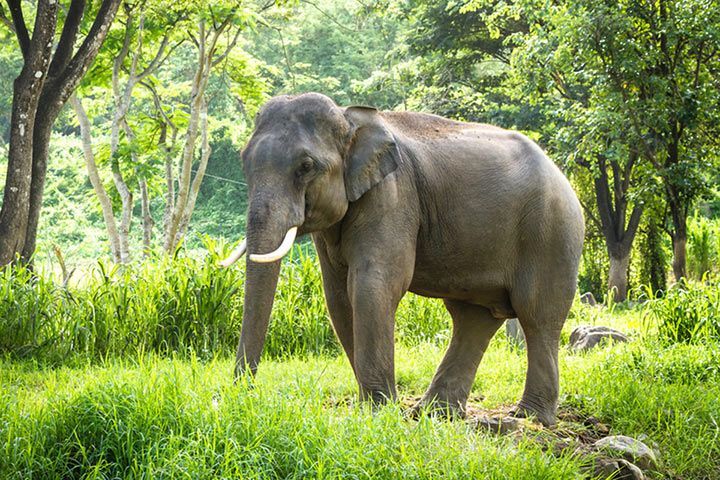
Species
There are three subspecies of Asian elephants: the Sri Lankan elephant, the Sumatran elephant and the Indian elephant.
Distribution and Habitat
Asian elephants can be found in many countries in Asia: Sri Lanka, India, Nepal, Bhutan, Bangladesh, Myanmar, Thailand, Cambodia, Laos, Vietnam, China, Malaysia and Indonesia. Their habitat is tropical rainforests, grasslands and bushland. Sometimes they live in savanna-like areas, too.
Life Style
Asian elephants are most active at dusk and dawn. They spend most of their time searching for food, eating, exploring their surroundings, resting and finding a mate. They also like to play and bathe - in water and mud.

Anatomy and Appearance
Size and Weight
Asian elephants grow up to 10 feet (3 meters) high and weigh 2-5.5 tons. A particularly large animal in India was 11.25 feet (3.43 meters) high. However, the Indian elephant and the Sri Lankan elephant are usually about the same size and weigh about the same. The Sumatran elephant is slightly smaller and lighter.
Trunk
The trunk of the Asian elephant features a finger-like extension at its tip, resembling the appearance of a finger.
Ears
Asian elephants have small, round ears. They grow to about 24 inches (60 cm) long and 24 inches (60 cm) wide.
Tusks
Do Asian elephants have tusks? Yes. But only the males, the females don't. In Sri Lanka there are also bulls that don't develop tusks. So in Asia, if you see an animal without tusks, it is either a cow or a male Sri Lankan elephant.

Why Do Asian Elephants Have Small Ears?
When it's hot, elephants lower their body temperature by fanning their ears. The draft cools down their blood - and thus the entire body. The Asian elephant lives in dense, tropical forests that provide plenty of shade. In contrast to the African species, which lives in savannas and steppes, it isn't exposed to the sun as much. That's why it doesn't have to cool down as much. Furthermore, having large ears would pose a challenge in navigating through the dense rainforest and could be susceptible to injury from sturdy vegetation.
Asian or African Elephant – What’s the Difference?
• Size
Unlike the African savannah elephant, the Asian elephant is comparatively smaller in size, standing at around 10 feet (3 meters) tall, while its African counterpart can reach a height of almost 13 feet (4 meters).
• Trunk
The Asian elephant only has one fingerlike tip on its trunk instead of two.
• Tusks
Male Asian elephants are the only ones with tusks, while in African elephants, both males and females have tusks.
• Ears
The Asian elephant has much smaller ears. In the African they are about four times larger.
• Time of Activity
African elephants are active during the day and the night. Asian elephants use the day to get some rest and are most active at dusk and dawn.
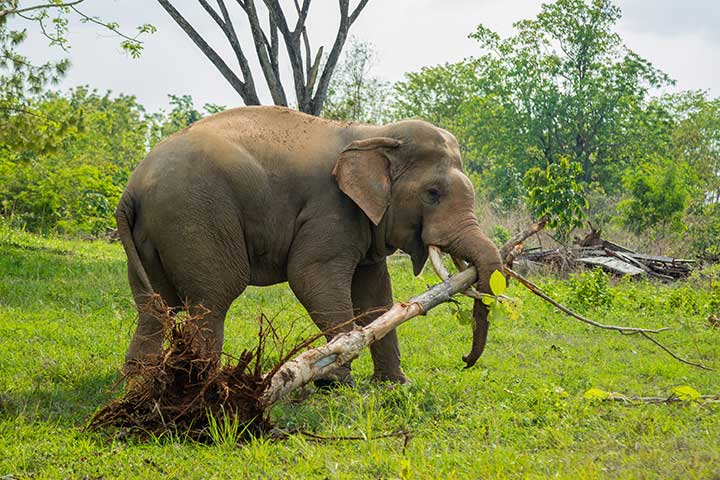
Diet
Asian elephants are herbivores. Their diet consists of soft and hard plants. They like to eat grasses, leaves, seeds, fruits and twigs best.
Life Span
In the wild, Asian elephants have a life expectancy of 50-60 years.
Enemies and Threats
Natural Enemies
An adult Asian elephant has no natural predators except for tigers that target young or weak animals. However, tigers themselves are among the highly endangered species.
Poaching and Hunting
Asian elephants have been hunted for their tusks for many decades - just like the African ones.
Destruction of Habitat
Many animals are still being killed by poachers nowadays, but the biggest threat to them is that their habitat is becoming smaller and smaller.
Life in Captivity
A significant number of Asian elephants are held in captivity, yet unlike their wild counterparts, their reproduction rate is significantly low, resulting in a decline in their population.
Population
How many Asian elephants are left? Estimates from 2018 suggest 48,000-52,000 animals are still alive. As of November 2023, there is no more recent data available. Experts believe that the actual number is significantly lower than the estimated range.
Conservation Status
The Asian elephant is classified as “endangered” on the Red List of Endangered Species.
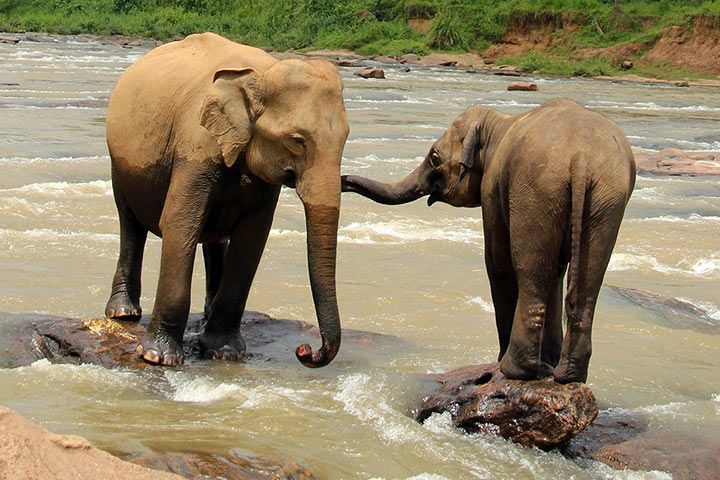
Reproduction
Gestation Period
The gestation period of Asian elephants is approximately 640 days, which is equivalent to a pregnancy of 22 months, similar to their African counterparts. No other mammal has a longer gestation period than elephants.
Calf
At birth, an elephant baby already weighs 180-220 pounds (80-100 kg) and is 30-35 inches (75-90 cm) high at the shoulder. By the way, baby elephants are called calves.

Fun Facts
Asian Elephants "Speak" Like a Human
Yes, it’s true, there are elephants that are able to speak! The Asian elephant Koshik is rather reticent, but it can speak six words in Korean, for example "yes", "no", "sit", and "lie down". Batyr was more talkative. He could use 20 words and was already close to a little chatterbox.
Unfortunately it grew up without the company of other elephants and therefore started to imitate humans. The method elephants use for talking: They stick their trunk into their mouth and put the tip of it on their tongue to form sounds that resemble human language. Scientists do not know if they really understand what they are saying.
Asian Elephants Make Music
In Thailand there is an orchestra with 16 elephants. The gray animals make music on specially designed instruments.
The Asian Elephant Is Related To:
Animals in the Same Biome:
Related Articles:
- Main Characteristics of Elephants
- Animals with an Amazing Sense of Hearing
- Amazing Facts about Animal Teeth
Recommended Videos:













 All About Animal Senses
All About Animal Senses Animal Eating Habits
Animal Eating Habits


